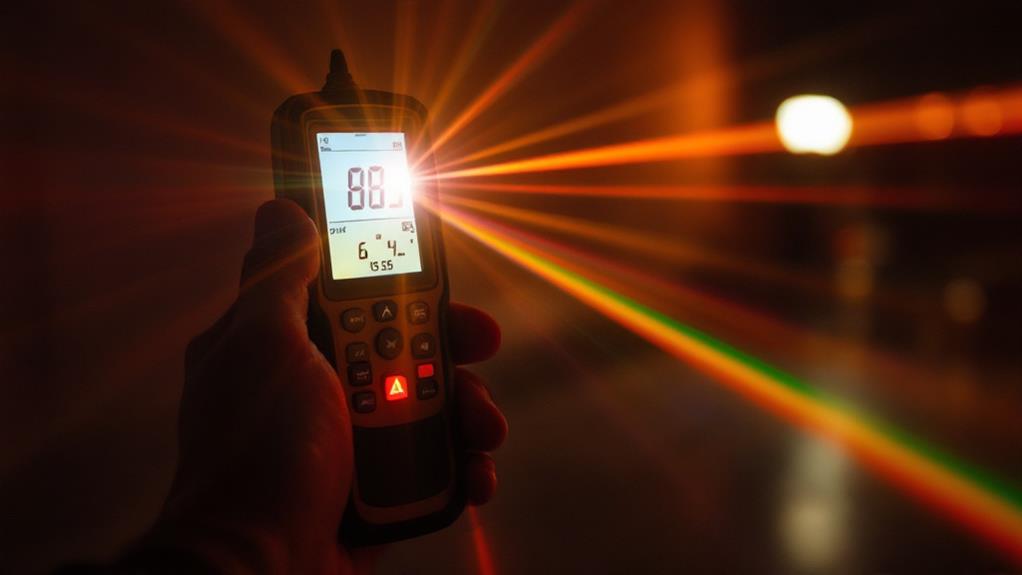Interesting Facts About Nuclear Weapons: The Science Behind the Power
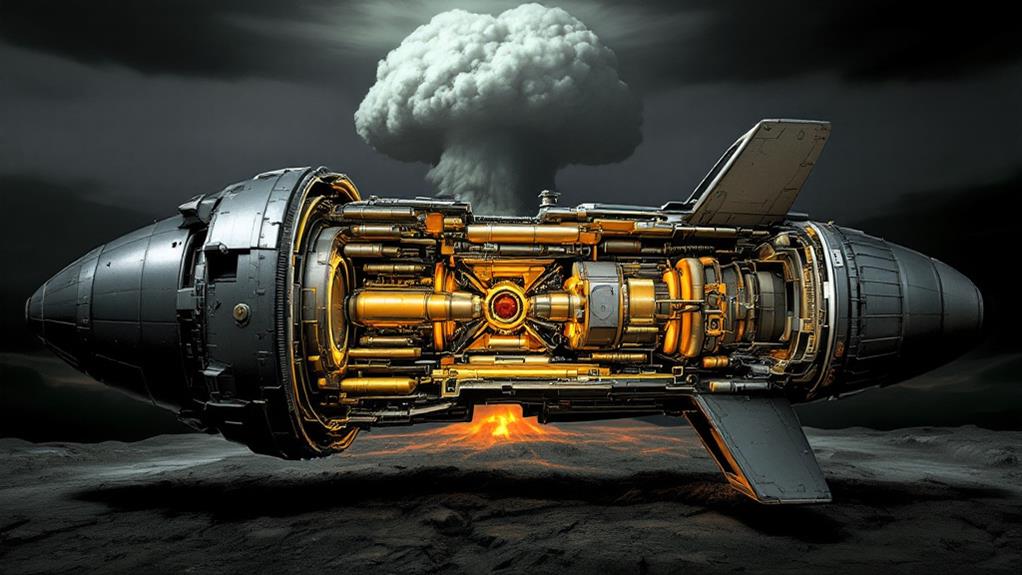
Nuclear weapons wield the incredible power of atomic processes, unleashing forces that can devastate entire cities. They rely on nuclear fission, where heavy atoms split, or fusion, where light atoms combine. Both release enormous energy through Einstein's famous E=mc² equation. These reactions create chain reactions, requiring a critical mass of fissionable material to sustain. Thermonuclear weapons use a two-stage design, combining fission and fusion for even greater yields. Beyond the blast, nuclear detonations produce electromagnetic pulses that can disable electronics and release harmful radiation. The science behind these weapons is as fascinating as it is terrifying. Exploring further reveals the full scope of their power.
The Splitting Atom
Nearly all nuclear weapons rely on the process of nuclear fission, or the splitting of atoms. To understand this process, you need to grasp the basics of atomic structure. At the center of an atom is its nucleus, composed of protons and neutrons. Surrounding this nucleus are electrons, which orbit in different energy levels.
In nuclear fission, a heavy atom's nucleus is split into lighter nuclei when bombarded with neutrons. This process releases an enormous amount of energy, along with more neutrons that can trigger a chain reaction. The most common elements used for nuclear fission in weapons are uranium-235 and plutonium-239.
The energy released during fission comes from the conversion of a small amount of mass into energy, as described by Einstein's famous equation E=mc². This reaction is far more powerful than chemical explosions, releasing millions of times more energy per gram of material.
Radioactive decay plays a pivotal role in nuclear weapons. It's the process by which unstable atomic nuclei spontaneously release energy in the form of radiation. This decay is utilized in nuclear weapons to initiate and sustain the fission reaction, ultimately leading to the devastating explosive power of these devices.
Chain Reactions Explained
The fission process in nuclear weapons isn't a one-off event; it's the start of something much bigger. When a neutron splits an atom, it releases more neutrons, which in turn split more atoms. This cascading effect is called a chain reaction, and it's the linchpin to both nuclear weapons and nuclear energy.
In a controlled environment, like a nuclear reactor, this chain reaction is carefully managed to produce energy safely. Reactor operators use control rods to absorb excess neutrons, preventing the reaction from spiraling out of control. This principle is essential for nuclear reactor safety, ensuring that the energy release remains steady and manageable.
However, in a nuclear weapon, the goal is to achieve an uncontrolled chain reaction as quickly as possible. The weapon's design allows for a rapid multiplication of fission events, releasing an enormous amount of energy in a fraction of a second. This explosive chain reaction not only creates the devastating blast but also generates intense heat and radiation.
Interestingly, controlled chain reactions are also used for radioactive isotope production, which has applications in medicine, industry, and scientific research.
Critical Mass
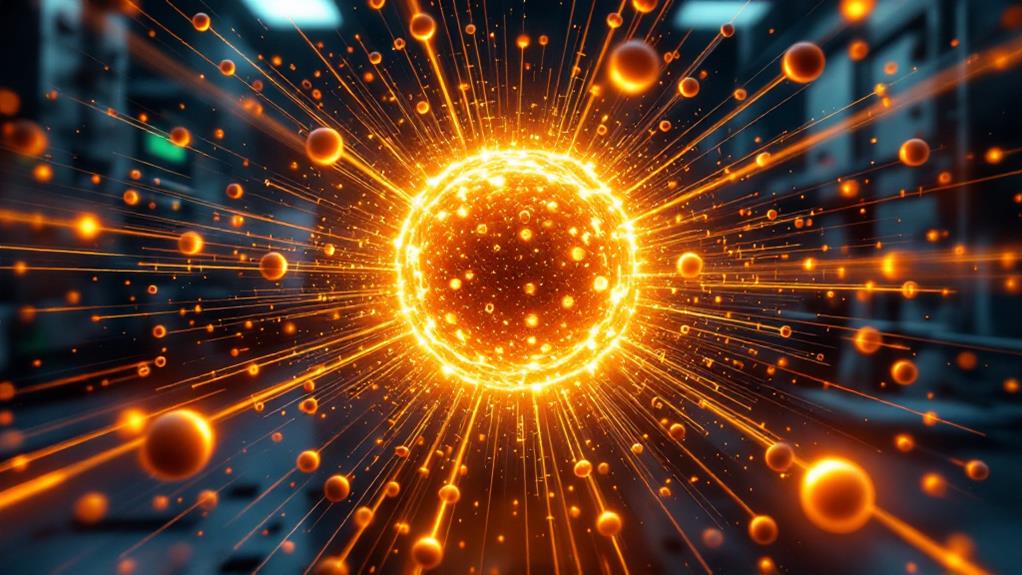
For a nuclear chain reaction to occur, you need more than just fissionable material. You must have a sufficient quantity of it, known as the critical mass. This essential amount ensures that neutrons released during fission are more likely to strike other atoms, sustaining the chain reaction.
The critical mass composition varies depending on the nuclear material used. For uranium-235, it's about 52 kilograms, while plutonium-239 requires only 10 kilograms. These amounts aren't fixed; they can change based on factors like purity, density, and shape of the material.
Reaching the critical mass threshold is indispensable for both nuclear weapons and reactors. In weapons, it's achieved by rapidly combining subcritical masses. Reactors, however, maintain a controlled reaction just below this threshold.
Understanding critical mass is important for nuclear safety. It helps determine safe handling procedures for fissile materials and guides the design of storage facilities. It's also vital for non-proliferation efforts, as it informs regulations on the quantities of nuclear materials that can be safely possessed or transported.
Fusion vs. Fission
While fundamental mass plays a key role in nuclear reactions, it's important to understand the two main types of these reactions: fusion and fission. Fission involves splitting heavy atomic nuclei, like uranium or plutonium, into lighter elements, releasing energy in the process. It's the principle behind traditional nuclear power plants and most nuclear weapons.
Fusion, on the other hand, combines light atomic nuclei, typically hydrogen isotopes, to form heavier elements. This process releases even more energy than fission and is the power source of stars. Scientists are exploring fusion as a potential clean energy source, but it's challenging to replicate on Earth due to the extreme conditions required.
Both fusion and fission rely on different energy transfer mechanisms. Fission weapons use a chain reaction of neutrons, while fusion weapons often use the energy from a fission reaction to trigger fusion. Researchers are developing magnetic confinement techniques to control fusion reactions for peaceful purposes. These methods use powerful magnetic fields to contain and manipulate the super-heated plasma needed for fusion.
Understanding the differences between fusion and fission is pivotal for grasping the intricacies of nuclear weapons and the potential for future clean energy sources.
Electromagnetic Pulse Effects
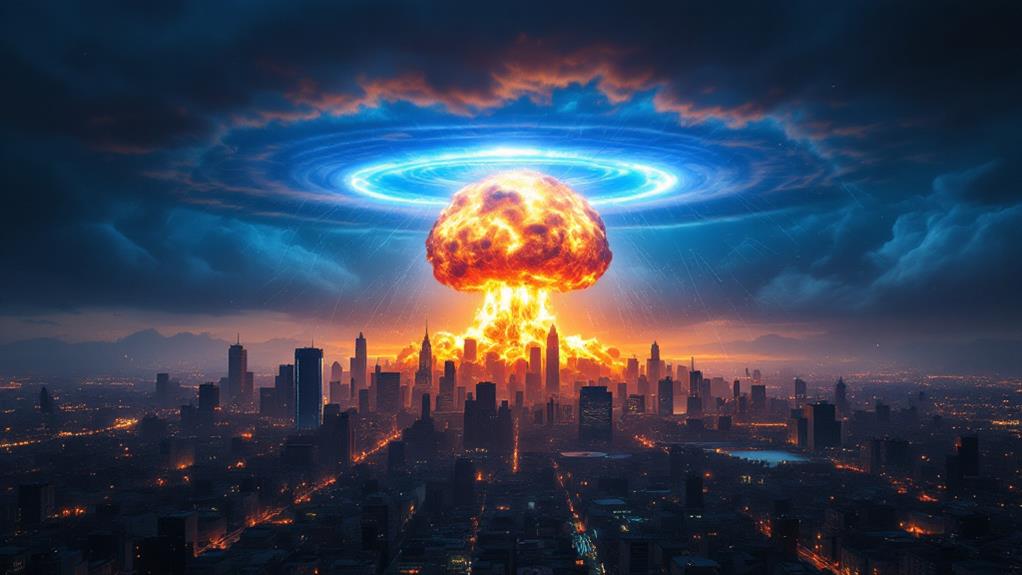
You've probably heard of EMPs in science fiction, but they're a very real phenomenon associated with nuclear weapons. An electromagnetic pulse (EMP) is a burst of electromagnetic energy produced by a nuclear explosion. When a nuclear weapon detonates, it releases a powerful surge of electromagnetic radiation that can disrupt or destroy electronic systems over a large area.
The detonation effects of an EMP can be devastating. It can instantly fry electronic circuits, disable power grids, and render communications systems useless. The pulse travels at the speed of light and can affect areas hundreds of miles away from the blast site. Modern society's heavy reliance on electronics makes us particularly vulnerable to EMP attacks.
To protect against EMPs, electromagnetic shielding is essential. This involves encasing sensitive equipment in conductive materials that block electromagnetic fields. Military and critical infrastructure often use Faraday cages or specially designed rooms to shield important electronics. While it's challenging to shield entire cities, hardening key systems and preparing backup power sources can help mitigate the impact of an EMP attack.
Thermonuclear Weapon Design
Thermonuclear weapons, also known as hydrogen bombs, represent a significant leap in destructive power over traditional atomic bombs. These sophisticated devices use a two-stage design to achieve unparalleled explosive yields. The primary stage consists of a fission bomb, similar to those used in Hiroshima and Nagasaki. This initial explosion triggers the secondary stage, where fusion reactions occur in a core of hydrogen isotopes.
The fusion process releases an enormous amount of energy, far surpassing that of a fission bomb. Yield calculation for thermonuclear weapons is complex, involving factors such as the efficiency of the fusion reaction and the amount of fissile material used. The resulting explosion creates a blast wave with devastating effects, capable of leveling entire cities.
Understanding blast wave physics is vital in evaluating the damage potential of these weapons. The intense heat and pressure generated by the explosion create a rapidly expanding shockwave that can cause widespread destruction. Thermonuclear weapons also produce significant electromagnetic pulse effects and radioactive fallout, further amplifying their destructive capabilities. These factors make them among the most feared and controversial weapons in existence.
Radiation and Fallout
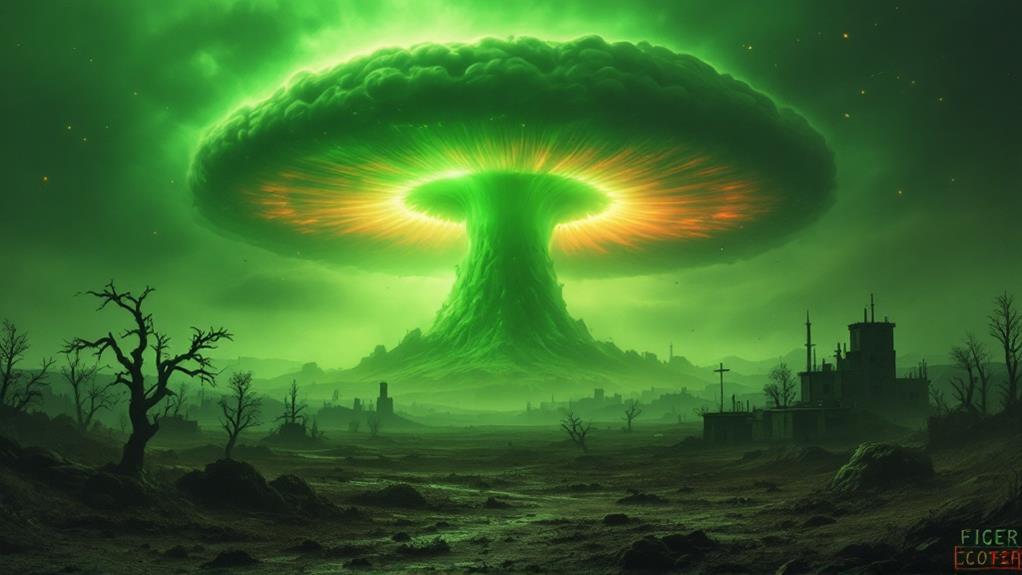
Although often overlooked, radiation and fallout are among the most insidious effects of nuclear weapons. When a nuclear explosion occurs, it releases intense ionizing radiation that can cause severe damage to living organisms. This radiation comes in various forms, including gamma rays, neutrons, and beta particles, each with its own devastating effects on human health.
The fallout from a nuclear detonation presents long-term dangers through radiological contamination. As radioactive particles settle on the ground and in water sources, they continue to emit harmful radiation for years or even decades. You'll face several risks from this lingering threat:
- Increased cancer rates due to DNA damage
- Genetic mutations that can affect future generations
- Contamination of food and water supplies
You're not just at risk in the immediate blast area. Fallout can travel hundreds of miles, carried by wind and weather patterns. It's vital to understand that even if you survive the initial explosion, you may still be exposed to dangerous levels of radiation. Protection from fallout requires rapid evacuation or seeking appropriate shelter with adequate supplies to wait out the most intense period of radioactivity.
Yield Measurement
Measuring the destructive power of nuclear weapons is a critical aspect of understanding their capabilities and effects. When it comes to yield measurement, scientists and military experts use various methods to calculate the explosive power of these devastating weapons.
The most common unit for yield calculation is kilotons (kt) or megatons (Mt) of TNT equivalent. This means they compare the nuclear blast to the energy released by a specific amount of TNT. For example, a 1-kiloton nuclear weapon has the explosive power of 1,000 tons of TNT.
To measure yield, experts analyze several factors, including the size of the fireball, the intensity of the shockwave, and the amount of radiation released. They also use sophisticated sensors and satellite imagery to gather data. One method of explosive power measurement involves studying the electromagnetic pulse (EMP) generated by the detonation.
You might be surprised to learn that yield isn't always precisely known, especially for older tests. Estimates can vary, and some historical yields have been revised as new information becomes available. Understanding yield measurement helps in evaluating the potential impact of nuclear weapons and informs disarmament efforts.

